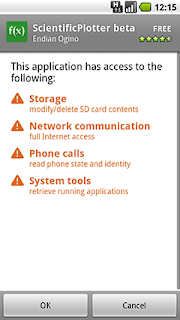I wanted to give you a overview of the books I used to begin my first steps in Android, sure it is at start tough, but with time and ambition you get a clue about how the system is build up and what the programmers at Google thought when making the system this way.
At start I don't claimed that the following list complete, so if you see one book missing don't hesitate and send me a message. So let us get started, first I introduce each book and give my on personal opinion on it, and if available a link to the author:
What I really like about this book, is that is well structured, this means it takes you from the ground on and introduce you to Android and help you step by step to setup everything correctly for programming, but this also means that if you are familiar with these things you could easily skip about a third of the book. What is also worth mentioning is that in the middle of the book you come across a chapter showing you how to signing and publishing you application, this is surely somewhat early but it gives you a tremendous motivation boost. What I also like was the chapter about 2D/3D graphics which gave me personally a good start to work on.
Something which is really bad about the book is that it is so monochrome, all pictures and text are represented in just three or four colors.
I have to be honest, this book on only read browse through shortly, with its 116 pages it is not that large, but it sure gives you a comprehensive overview but nothing more, good for starters but it should not be the only book you are reading.
So let us move over to next book: ‘Beginning Android’ by Mark L. Murphy also published over Apress, 2009
I have to admit that I have learnt all the layout xml stuff, menus, preferences, orientation et cetera from this book and it was also a good reference book, also the chapter ‘Getting Fancy with Lists’ takes all kind of fear from me away using ListView (which is indeed very powerful). Some chapters I however skipped, like widgets and content providers not because they were poorly written but because I find that better discussed in another books. Overall this book is now about 2 years old but fully recommendable.
The next book is the successor of ‘Beginning Android’, called: ‘Beginning Android 2’ first dated on Mar 2010
I don’t want to waste too much time on that one, because I’m really disappointed about this one. The reason because I feel so bad when thinking at this one, is because it is basically a copy from the successor, and I don’t like such a copy/past policy. It really doesn’t know why someone increment the number of a book just because there are some chapters different and some pictures now in color. I have to say I don’t really read it after some pages I dropped it, and by way there is again a successor called ‘Beginning Android 3’ which is not yet published at this time but I feel gloomy about the future of this one, maybe it is a good idea to start with this one but I don’t take the responsibility for that.
There seems to be a kind of system over Apress, because our next books are called ‘Pro Android’ and ‘Pro Android 2’ by Sayed Y. Hashimi, Satya Komatineni and Dave MacLean who is only on the cover of the last book, both books can be found over Apress and are released on Jun 2009 resp. Mar 2010
These books which are clearly title as ‘Pro’ assuming it means professional starts at a point where other books end with, so I think it should be a sequel to the previous ones. Nevertheless I found some helpful information’s in them specially according animation and also are some chapters new in ‘Pro Android 2’ which are worth reading (besides the ones which were just copied); these are ‘Android Search’, ‘Touchscreens’, ‘Titanium Mobile: A WebKit-Based Approach to Android Development’ and ‘Working with Android Market’. Also there is a successor planned but still not published called ‘Pro Android 3’
So thats all for the first part, I hope you like it, and remember feedback is always welcome






























